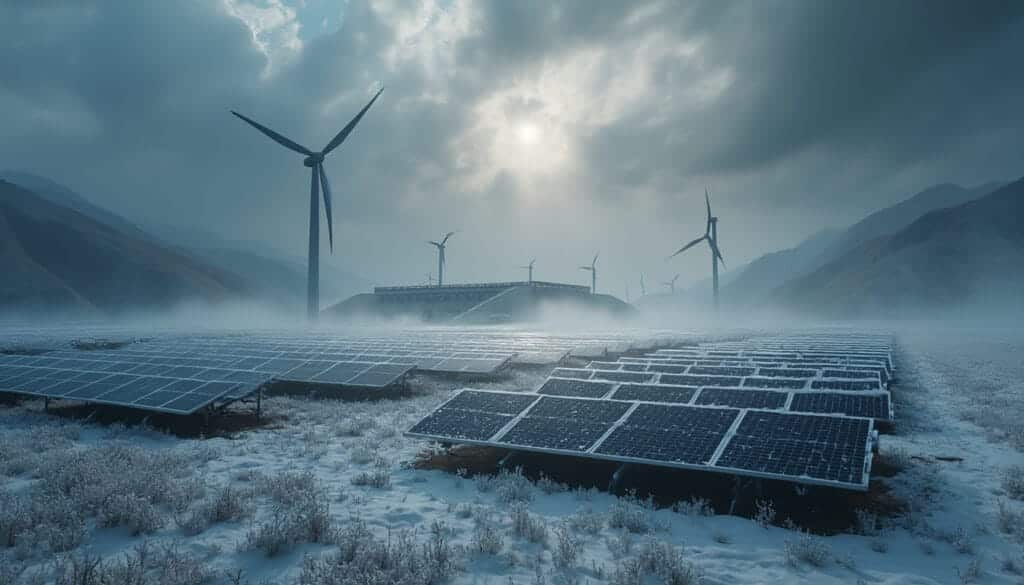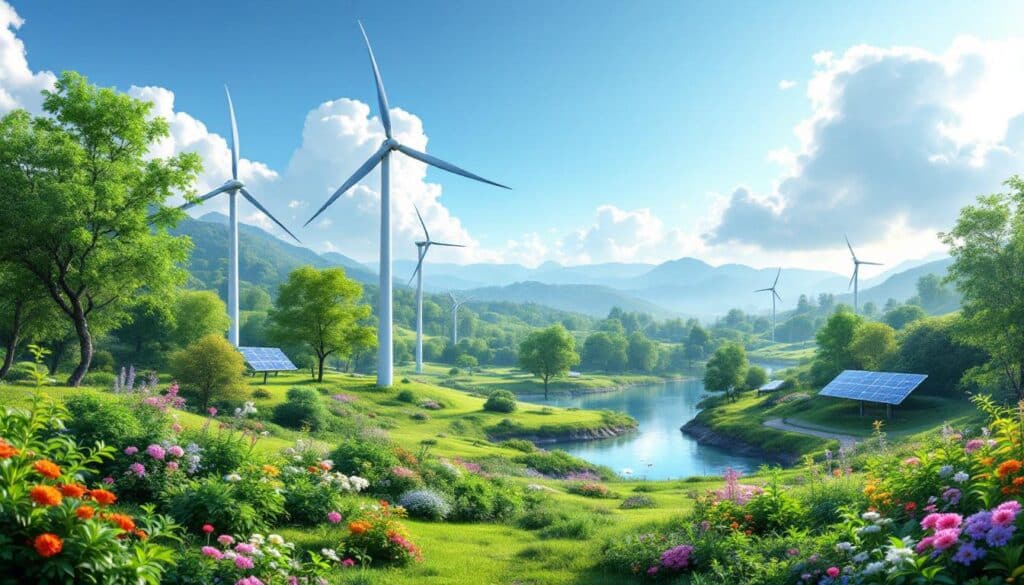The energy transition in China is experiencing explosive growth, driven by monthly records in wind and solar energy.
However, this increased reliance on renewables exposes the electricity system to new climate vulnerabilities.Extreme weather fluctuations can disrupt the balance between energy production and demand.
With an already diversified generation capacity between wind, solar, and hydropower, China aims to achieve carbon neutrality by 2060. Nevertheless, droughts and periods of low sunlight or wind can lead to significant energy shortages. To address these challenges, the country is exploring solutions such as energy storage and improving transmission infrastructure. Despite these efforts, the temptation to increase the share of coal plants remains a controversial option.
“`html
how do extreme weather conditions affect renewable energies in china
China is establishing itself as a global leader in the production of renewable energies, with massive infrastructures such as the Three Gorges Dam. However, this transition to cleaner energy sources is not without challenges. Extreme weather conditions, such as prolonged droughts or periods of low sunlight and wind, can significantly disrupt the production of renewable energies. For example, during a severe drought, the production of hydropower is reduced, thereby limiting the ability to compensate for fluctuations in wind and solar energies.
Researchers from Dalian University of Technology have modeled the impact of these climatic events on the Chinese energy grid. They concluded that, in extreme unfavorable weather scenarios, energy production could decrease by nearly 10%, leading to electrical shortages. This vulnerability highlights the need to improve the resilience of the energy system in the face of climate uncertainties.
In comparison, other nations like Uruguay have also invested heavily in renewable energies but face similar challenges related to varied weather conditions. These international examples underscore the importance of strategic planning to ensure stable and reliable energy production.
what are the main challenges of reliance on renewables in china
The rapid expansion of renewable energies in China, mainly consisting of wind, solar, and hydropower, presents several challenges. One of the main obstacles is the variability of natural resources. Wind and sunlight are intermittent, and when the production from these sources fluctuates, the stability of the grid can be compromised. Although hydropower offers some stability, it is not infallible, especially during drought periods.
Moreover, integrating renewables into the electricity grid requires robust and flexible infrastructures. Currently, about half of China’s energy production capacity comes from renewables, and this figure is expected to reach nearly 90% by 2060. This rapid increase demands significant investments in transmission and energy storage infrastructure to manage production fluctuations.
Furthermore, the energy transition is also hindered by political and economic factors. In response to energy shortages caused by unfavorable weather conditions, the Chinese government has sometimes resorted to coal plants, despite commitments to carbon neutrality. This persistent dependence on coal complicates efforts to reduce greenhouse gas emissions and promote cleaner energy.
what solutions are proposed to strengthen the resilience of the chinese energy grid
Faced with the challenges posed by extreme weather conditions, several solutions are being considered to strengthen the resilience of the Chinese energy grid. One key strategy is to improve the efficiency of transmission infrastructures. By facilitating the transfer of excess energy between provinces, China can significantly reduce the risk of local shortages. This could be achieved by further expanding the transmission network and integrating advanced technologies for energy management.
Another approach is to increase energy storage capacity. Researchers estimate that China will need to add tens of millions of kilowatts of new storage capacity by 2060 to achieve carbon neutrality. Solutions such as large-capacity batteries or pumped hydroelectric systems are essential for storing excess energy produced during favorable periods and releasing it when production is insufficient.
Additionally, technological innovation plays a crucial role. The development of hybrid plants that combine different sources of renewable energy can provide more stable and reliable production. For instance, integrating wind and solar with hydropower helps mitigate fluctuations from each source by using the flexibility of hydropower to compensate for periods of low wind or solar production.
Finally, the adoption of incentive policies and favorable regulations is essential. Initiatives similar to those observed in other regions, such as Texas, could encourage investments in renewable infrastructures and energy storage while limiting dependence on coal.
what role do transmission infrastructures play in preventing energy shortages
Transmission infrastructures play a crucial role in China’s ability to prevent energy shortages caused by extreme weather conditions. An efficient transmission network allows for the redistribution of energy produced in areas where demand is high to those where production is insufficient. This is particularly important during periods of low production from renewable energies due to unfavorable weather conditions.
Thus, expanding and modernizing transmission infrastructures is a priority. By strengthening the existing network and building new high-capacity transmission lines, China can improve its energy resilience. Furthermore, integrating smart technologies, such as smart grids, can optimize energy management in real-time, thereby reducing the risks of blackouts.
A concrete example is the increase in interprovincial transmission capacity, which allows for the transfer of excess energy produced in regions rich in renewable energies to other areas requiring additional supply. This flexibility is essential for maintaining a stable energy supply and avoiding service interruptions, even in unfavorable weather conditions.
Moreover, improving transmission infrastructures also contributes to optimizing the use of available energy resources. This maximizes production efficiency and reduces energy losses during transport, thereby strengthening the entire Chinese energy system.
what are the political and economic impacts of energy vulnerabilities in china
The vulnerabilities of the energy system in China to extreme weather conditions have profound implications both politically and economically. Politically, frequent energy shortages and blackouts may lead to instability and mistrust in current energy policies. The Chinese government, facing internal pressures, might be forced to reconsider its strategies and strengthen its commitment to renewable energies.
Economically, interruptions in energy supply can have severe consequences for industries and businesses. A decrease in industrial production due to a power outage can result in significant financial losses and affect China’s overall competitiveness in the global market. Additionally, the increased use of coal plants to address energy deficits raises greenhouse gas emissions, thereby jeopardizing national commitments to carbon neutrality.
Internationally, China’s energy challenges can also influence global energy markets. For example, increased investments in global renewable capacities can alter supply and demand dynamics, impacting prices and strategies of other countries. Furthermore, the perception of China as a sustainable energy leader may be affected, thus influencing international partnerships and collaborations in the clean energy sector.
how can technology and innovation help to overcome energy challenges in china
Technology and innovation are crucial levers for overcoming the energy challenges faced by China. The development of new energy storage technologies, such as advanced batteries and pumped hydroelectric systems, can facilitate better management of fluctuations in renewable energy production. These technologies offer solutions for storing excess energy during periods of high production and releasing it when needed, thereby improving grid stability.
Furthermore, innovations in smart grids and energy management systems allow for a more efficient and flexible use of available energy resources. These intelligent systems can optimize energy distribution in real-time, reducing losses and increasing resilience against climate disruptions.
Moreover, research and development in renewable energies themselves play a crucial role. Enhancing the efficiency of solar panels, wind turbines, and hydropower infrastructures can increase overall production while reducing costs. Continued investments in R&D are essential for maintaining China’s competitiveness in the global clean energy market.
Finally, the adoption of information and communication technologies in the energy sector can facilitate better coordination and faster decision-making. For example, using artificial intelligence to forecast energy needs and production fluctuations can help anticipate shortages and adjust distribution accordingly.
Articles similaires
Thank you!
We will contact you soon.














